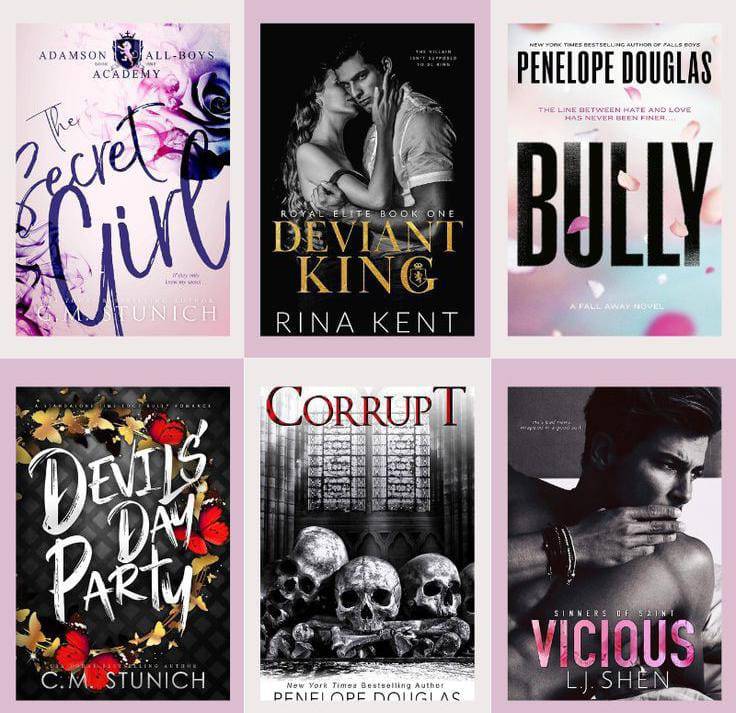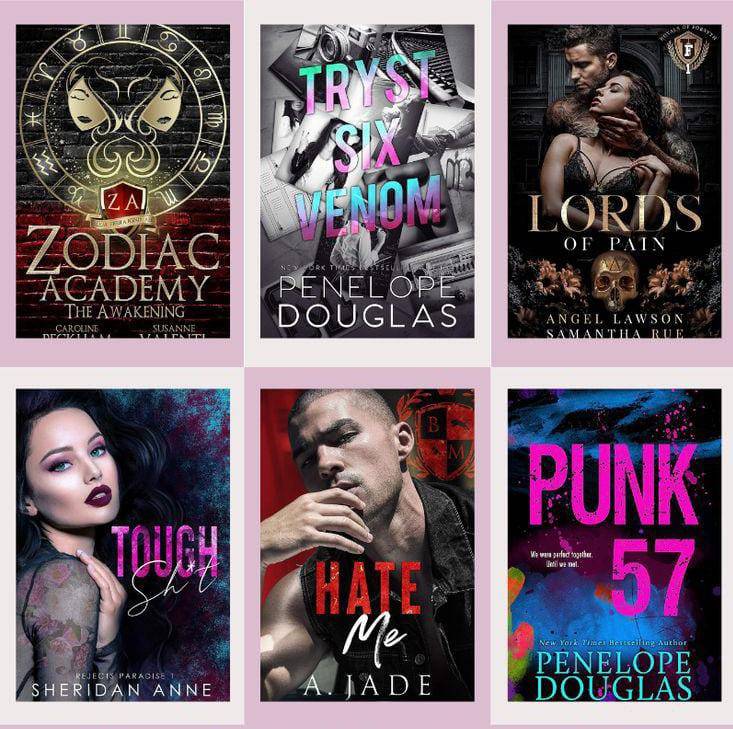Bully romance books have increasingly become a prominent subgenre within contemporary romance literature. These stories often explore the relationship between two characters where one is a bully or shows domineering behavior towards the other. While the genre has gained a dedicated fan base, it has also sparked debate over its portrayal of power dynamics, emotional abuse, and relationship ideals. This article delves into the psychological dynamics at play in bully romance books and discusses the impact they may have on readers.
Bully romance books often contain intense emotional conflict and dramatic interactions between characters. The “bully” character typically displays a range of aggressive behaviors, from verbal harassment to manipulative tactics. The primary conflict often revolves around the evolving relationship between the bully and the victim, which can include elements of redemption, forgiveness, and transformation.
Understanding the psychological dynamics in bully romance books requires examining the motivations of the bully and the reactions of the victim.
Bullies in these stories often seek control over others as a way to assert dominance and cope with their own insecurities or trauma.
To maintain power, the bully may use manipulative tactics, making the victim doubt their reality or question their self-worth.
A common theme in bully romance books is the transformation of the bully into a more compassionate and understanding partner. This arc can stem from a desire for validation or a longing for connection.
Character motivations in bully romance books can be complex and multifaceted, often driven by underlying emotional or psychological issues.
The bully seeks control over others to maintain a sense of power and superiority in the relationship. This need for control might stem from past experiences of feeling powerless or out of control.
A common motivation for the bully is deep-seated insecurity or unresolved emotional trauma. They may lash out or exert control to mask their vulnerabilities, fearing rejection or exposure.
Some bully characters are motivated by a desire for revenge or retribution, especially if they believe they’ve been wronged in the past. This motivation can drive them to seek validation through dominance and intimidation.
In some cases, the bully craves attention and recognition, using their aggressive behavior to gain visibility or respect from others. This can be linked to a need for approval or validation.
The bully might realize the harm their behavior causes and be motivated to change to earn the other character’s forgiveness and love.
Understanding these motivations is crucial for unpacking the complex dynamics in bully romance books. By recognizing the driving forces behind each character’s behavior, authors and readers can better appreciate the emotional and psychological intricacies within these stories, ultimately fostering more responsible storytelling and deeper discussions about healthy relationships.
Victims of bullying in these books often experience a range of emotions, from fear and confusion to anger and defiance.
The intensity of the bully’s behavior can create a cycle of codependency, where the victim becomes reliant on the bully’s approval or acceptance.
The victim in these stories might be motivated by empathy, understanding the underlying reasons behind the bully’s behavior. They might believe in the bully’s capacity to change and want to support their journey toward redemption.
Some victims find themselves motivated to regain their sense of self-worth and independence, eventually standing up to the bully’s behavior. This journey can drive the narrative arc from vulnerability to empowerment.
Love and loyalty can be powerful motivators. The victim might feel a strong emotional connection to the bully despite the abuse, leading them to stay in the relationship in hopes of change or because of a sense of loyalty.
Fear of backlash or dependency on the bully for emotional or financial support can also motivate the victim to stay in the relationship. This dependency can create a cycle of abuse that’s difficult to break.
Some bully romance books depict the victim’s journey toward empowerment and self-discovery, highlighting the strength required to stand up to abusive behavior.
Bully romance books attract readers for various reasons, but their portrayal of toxic relationships can raise concerns.
The emotional highs and lows create a compelling reading experience, with dramatic scenes that keep readers engaged.
The possibility of the bully’s redemption and transformation into a better partner can be satisfying and hopeful.
These books offer a safe space to explore darker aspects of relationships and human behavior.
The repeated depiction of abusive or controlling behavior as part of a romantic arc can normalize these dynamics, especially for younger readers.
When abusive actions are justified or excused due to the bully’s backstory or personal growth, it can send a message that love can excuse toxic behavior.
For readers who lack a solid understanding of healthy relationships, these books can shape their perceptions of what constitutes acceptable romantic behavior.
To address the potential risks associated with bully romance books, several approaches can be taken
Authors can create stories that explore complex dynamics without glorifying or excusing abuse. This can be achieved by focusing on the consequences of toxic behavior and emphasizing healthy relationship patterns.
Providing content warnings and making clear boundaries for what constitutes acceptable behavior can help readers navigate these stories with caution.
Discussions about the themes and dynamics in bully romance books can root awareness and critical thinking, helping readers discern healthy relationships from toxic ones.
By including characters who model respect, communication, and equality, authors can offer positive examples of romantic relationships.
Bully romance books present a captivating and intense reading experience, but the psychological dynamics they explore can be complex and potentially harmful. By addressing these dynamics thoughtfully and promoting responsible storytelling, the literary community can create stories that both engage and educate readers about the importance of healthy relationships. Through open dialogue and balanced narratives, readers can enjoy the drama of bully romance books without compromising their understanding of what it means to be in a healthy and respectful romantic relationship.
Bully romance books often explore intense emotional and psychological dynamics between characters. At the heart of these stories lies the theme of inner conflict—both for the “bully” and the victim—fueling the tension and drama that drives the narrative
Inner conflict in bully romance books can arise from various sources, reflecting the complexities of human relationships.
Characters, particularly the bully, often grapple with moral questions about their behavior and its impact on others. They might struggle with guilt and shame over their actions while trying to maintain a facade of strength and control.
The bully’s behavior is usually always rooted in personal trauma, unresolved emotional issues, or deep-seated insecurities. This internal turmoil can lead to conflicting desires: to maintain control while also seeking redemption or approval.
Both the bully and the victim may experience conflicting emotions, such as love and resentment, fear and hope, or loyalty and anger. These emotional contradictions can lead to internal struggles that drive the story’s progression.
Characters might face pressure from societal norms or peer groups, leading to inner conflict about how they should behave within a romantic relationship. This pressure can complicate their journey toward personal growth and change.
Inner conflict in bully romance books can manifest in various ways, shaping character arcs and relationship dynamics. Characters may experience intense emotional turmoil, struggling with their feelings and reactions to events. This can lead to mood swings, emotional outbursts, or periods of withdrawal and isolation.
Inner conflict causes characters to act inconsistently, switching between aggression and vulnerability, or between control and compassion. These shifts reflect their internal struggle as they navigate complex emotions.
As characters stand in front of their inner conflict, they may engage in self-reflection, questioning their actions and motivations. This introspection can lead to growth and transformation, particularly for the bully as they seek redemption.
Inner conflict can drive characters toward acts of redemption or reconciliation, as they attempt to make amends for past behavior. These moments can be pivotal in resolving the inner conflict and altering the course of the relationship.
The presence of inner conflict in bully romance books plays a significant role in character development and relationship arcs. The bully’s journey toward redemption typically involves confronting their inner demons, leading to personal transformation and a shift in their behavior.
As characters work through their inner conflict, the process can lead to stronger, more meaningful relationships. This journey requires vulnerability, honesty, and trust, fostering deeper connections between characters.
The resolution of inner conflict can bring closure to the story’s narrative arc. It signifies the characters’ progress toward overcoming their struggles and achieving a healthier dynamic in their relationship.
Inner conflict in bully romance books often drives themes of redemption and forgiveness. These themes resonate with readers, offering a sense of hope and possibility, even in relationships that start with significant challenges.
Smutty bully romance books are experiencing a surge in popularity, driven by their intense and dramatic narratives that explore power dynamics and explicit sexual content. However, the rise of smutty bully romance has also sparked criticism. Critics argue that these stories can send harmful messages about love and relationships, especially to younger audiences. Smutty bully romance books offer readers an intense and emotionally charged escape, with dramatic storylines that feature complex power dynamics and explicit sexual content. While these books captivate fans with their high-stakes romance and themes of redemption, they also pose risks by potentially romanticizing abusive behavior and normalizing toxic relationships. As the popularity of this genre continues to grow, it’s crucial for authors, publishers, and readers to approach these stories with caution. Responsible storytelling that includes content warnings, promotes balanced character arcs, and emphasizes healthy relationship dynamics can help mitigate the risks. Ultimately, the focus should be on creating engaging narratives that entertain without reinforcing harmful patterns in romantic relationships.






